On the 21st December 2022, our Archpriest Giovanni, Vicar of the Mar Thoma Liberal Catholic Church in Italy, was invited by the Italian Theosophical Society to give a speech within a conference entitled “Sol Invictus and Christmas: the triumph of Light”. In the conference, Giovanni++ presented a speech about the Christian Symbolism of Christmas, a topic that was complemented by other two speeches: one about the alchemical meaning of Christmas and the other was about the “Sol Invictus and Winter Solstice”, showing how the Winter Solstice was celebrated in ancient Rome. The event was attended by around 70 people on Zoom and 130 participated to the streaming session on Youtube. Here below is reported the script of Fr. Giovanni’ speech.
In my presentation I have tried to condense a few concepts, but above all I have tried to bring the reflection to a somewhat different plane than the one we are all used to. When we talk about Christmas in the Christian world, as Christianity is an historical religion, we normally speak of the coming of the Son of God into the world and we place this event at a precise point in space and time. Instead, I would like, within the limits of my current understanding and knowledge, to try to transcend the historical dimension and attempt to show the universal dimension of the Nativity story. I will adopt the inner point of view, seeking the correspondences between the universal and the relative dimensions, showing that the Gospel accounts, beyond the historical aspect, speak of the journey of us all.
Moreover, that God and his kingdom are to be sought from within, the writings of the Evangelists themselves remind us of this: from Luke who reminds us that about the Kingdom of God we cannot say “Look! Here it is” or “There it is’”, which is echoed in the apocryphal Gospel of Thomas who adds "If it were in heaven, the birds would be there before you". Both conclude 'The Kingdom of God is within you'. Or St Paul, who in his letter to the Colossians recalls 'Christ in us, the hope of glory' and again 'Do you not know that your body is a temple of the Holy Spirit who is in you?' A clear invitation to look within ourselves.
Before delving into the mystery of the Nativity, I would like to make a very brief premise. My point of view certainly does not reflect most Orthodox positions and is therefore not to be understood as representative of the institutionalised world of the Churches. My position derives from the doctrine of a Church independent from Rome, which in the last century has had a rather interesting history and spread: the Liberal Catholic Church.
The origin of this church can be traced back to 1870, the year of the First Vatican Council, at which the dogma of papal infallibility was proclaimed. For this reason, some dissenting European dioceses separated from Rome and formed a communion known as the Utrecht Union of the Old Catholic Churches. The Union extended to England in 1908 with the episcopal consecration of Arnold Harris Mathew who formed the British branch of the Old Catholic Church. James Ingall Wedgwood, at the time on a vocational path in the Anglican Church, became fascinated by some of the speeches of Annie Besant, President of the Theosophical Society, and began to take an interest in Theosophy and was therefore removed from the Anglican Church. On learning of Mathew's ministry, Wedgwood contacted him, expressed his doctrinal views (now close to Theosophical thought) and was then admitted as a minister. In 1913 he was ordained a priest.
The year 1915 marked a watershed, Mathew became intolerant of theosophical thought and decided to leave, leaving the reins to Wedgwood. In the meantime, Mathew had also caused a schism in the Utrecht Union, separating the British and Continental branches. In 1916 Wedgwood was consecrated bishop and, during a trip to Australia, consecrated Bishop Charles Webster Leadbeater, an eminent theosophist, and formerly an Anglican priest. The two began a revision of liturgical texts and an in-depth study of the sacraments, laying the foundations for what would become the message of the new church they founded: the Liberal Catholic Church. The Great Depression, Leadbeater's death in 1934 and the war, as well as disagreements over certain organisational aspects of the church led to separations. Although this church no longer survives intact, in its original form, there remains a constellation of Liberal Catholic churches, more or less large, around the world that pass on the episcopal genealogy of Mathew, Leadbeater and Wedgwood, as well as their thought. One of these is the church of which I am a member.
Moreover, that God and his kingdom are to be sought from within, the writings of the Evangelists themselves remind us of this: from Luke who reminds us that about the Kingdom of God we cannot say “Look! Here it is” or “There it is’”, which is echoed in the apocryphal Gospel of Thomas who adds "If it were in heaven, the birds would be there before you". Both conclude 'The Kingdom of God is within you'. Or St Paul, who in his letter to the Colossians recalls 'Christ in us, the hope of glory' and again 'Do you not know that your body is a temple of the Holy Spirit who is in you?' A clear invitation to look within ourselves.
Before delving into the mystery of the Nativity, I would like to make a very brief premise. My point of view certainly does not reflect most Orthodox positions and is therefore not to be understood as representative of the institutionalised world of the Churches. My position derives from the doctrine of a Church independent from Rome, which in the last century has had a rather interesting history and spread: the Liberal Catholic Church.
The origin of this church can be traced back to 1870, the year of the First Vatican Council, at which the dogma of papal infallibility was proclaimed. For this reason, some dissenting European dioceses separated from Rome and formed a communion known as the Utrecht Union of the Old Catholic Churches. The Union extended to England in 1908 with the episcopal consecration of Arnold Harris Mathew who formed the British branch of the Old Catholic Church. James Ingall Wedgwood, at the time on a vocational path in the Anglican Church, became fascinated by some of the speeches of Annie Besant, President of the Theosophical Society, and began to take an interest in Theosophy and was therefore removed from the Anglican Church. On learning of Mathew's ministry, Wedgwood contacted him, expressed his doctrinal views (now close to Theosophical thought) and was then admitted as a minister. In 1913 he was ordained a priest.
The year 1915 marked a watershed, Mathew became intolerant of theosophical thought and decided to leave, leaving the reins to Wedgwood. In the meantime, Mathew had also caused a schism in the Utrecht Union, separating the British and Continental branches. In 1916 Wedgwood was consecrated bishop and, during a trip to Australia, consecrated Bishop Charles Webster Leadbeater, an eminent theosophist, and formerly an Anglican priest. The two began a revision of liturgical texts and an in-depth study of the sacraments, laying the foundations for what would become the message of the new church they founded: the Liberal Catholic Church. The Great Depression, Leadbeater's death in 1934 and the war, as well as disagreements over certain organisational aspects of the church led to separations. Although this church no longer survives intact, in its original form, there remains a constellation of Liberal Catholic churches, more or less large, around the world that pass on the episcopal genealogy of Mathew, Leadbeater and Wedgwood, as well as their thought. One of these is the church of which I am a member.
We come now to Christmas, the feast of Light.
I would start here, from this traditional antiphon part of the "Major Antiphons of Advent". The Advent Major Antiphons, also known as "O Antiphons" - because they all begin with O - are antiphons that are used between 17th December and 23rd December during liturgical celebrations and are invocations to the coming of Christ. Today is the 21st December, which you see in the Slide marks a change of pace. Before the 21st, Christ is invoked using appellations derived from prefigurations in the Old Testament (Wisdom, Adonai, Root of Jesse, Key of David). From now on, Christ is announced by his own appellations: Oriens (Light), King of the Gentiles and finally "Emmanuel", which I remember means "God with us".
Today's antiphon, which falls on the very day of the solstice, is particularly interesting. Let us read it.
O rising star, splendour of eternal light, sun of justice:
Come, enlighten those who lie in darkness and in the shadow of death.
Today is the darkest day of the year. In a day from which the light will begin to increase, we invoke Christ as the Light who comes to enlighten us. We are those wandering in darkness and in the shadow of death, as we are in a condition in which we experience tribulation and death, but for which we have been promised salvation. Man, who fell with Adam as a victim of his own sin, finds the way to Salvation by following the Light of Christ that guides him out of darkness.
But where is this Light? The words of John's Gospel come to mind. "The Light, it enlightens every man who comes into the world". It is always with us, but "It shines in the darkness, and the darkness has not understood it".
With the Fall, a separation is created. Man loses his integrity: two centres are created, symbolised by the heart (which represents the centre of being, where this light of the 'Beginning' continues to shine) and the brain, the centre of the separate identity, an organ that contributes to creating mental superstructures with which Man tends to identify himself and forget his own origins, his own nature, and through which he filters reality. Man recognises himself in the finite and in forms, and disregards the Eternal, which, however, is always present because, as we have seen, it is within us, it is part of us, and we are part of Him.
Traditionally, the heart is associated with the symbol of the Sun, the brain with the Moon. The Sun shines with its own light, the Moon with reflected light. A sign that the connection between the two centres remains, it is always there.
It is simply ignored, but within us a voice resounds a "Voice of one crying out in the wilderness". A voice that calls us back to the deepest meaning of our existence and that we all hear at least once in our lives.
I would start here, from this traditional antiphon part of the "Major Antiphons of Advent". The Advent Major Antiphons, also known as "O Antiphons" - because they all begin with O - are antiphons that are used between 17th December and 23rd December during liturgical celebrations and are invocations to the coming of Christ. Today is the 21st December, which you see in the Slide marks a change of pace. Before the 21st, Christ is invoked using appellations derived from prefigurations in the Old Testament (Wisdom, Adonai, Root of Jesse, Key of David). From now on, Christ is announced by his own appellations: Oriens (Light), King of the Gentiles and finally "Emmanuel", which I remember means "God with us".
Today's antiphon, which falls on the very day of the solstice, is particularly interesting. Let us read it.
O rising star, splendour of eternal light, sun of justice:
Come, enlighten those who lie in darkness and in the shadow of death.
Today is the darkest day of the year. In a day from which the light will begin to increase, we invoke Christ as the Light who comes to enlighten us. We are those wandering in darkness and in the shadow of death, as we are in a condition in which we experience tribulation and death, but for which we have been promised salvation. Man, who fell with Adam as a victim of his own sin, finds the way to Salvation by following the Light of Christ that guides him out of darkness.
But where is this Light? The words of John's Gospel come to mind. "The Light, it enlightens every man who comes into the world". It is always with us, but "It shines in the darkness, and the darkness has not understood it".
With the Fall, a separation is created. Man loses his integrity: two centres are created, symbolised by the heart (which represents the centre of being, where this light of the 'Beginning' continues to shine) and the brain, the centre of the separate identity, an organ that contributes to creating mental superstructures with which Man tends to identify himself and forget his own origins, his own nature, and through which he filters reality. Man recognises himself in the finite and in forms, and disregards the Eternal, which, however, is always present because, as we have seen, it is within us, it is part of us, and we are part of Him.
Traditionally, the heart is associated with the symbol of the Sun, the brain with the Moon. The Sun shines with its own light, the Moon with reflected light. A sign that the connection between the two centres remains, it is always there.
It is simply ignored, but within us a voice resounds a "Voice of one crying out in the wilderness". A voice that calls us back to the deepest meaning of our existence and that we all hear at least once in our lives.
Here is another recurring character in the Advent readings. The Forerunner, John the Baptist is, we read from the Gospel, sent to bear witness to the Light. Although he is not the Light.
In the Gospels it is his voice that cries out in the wilderness, announcing the Coming of the Lord.
"Behold the voice of one crying out in the wilderness: Prepare the way of the Lord, make straight his paths. 5 Let every valley be filled and every mountain and hill be lowered
What inner meaning can we draw? What does the forerunner ask for in order to prepare for the coming of Christ?
Obviously, this is not a call to a team of engineers to pave the way for the arrival of the Lord. But the call is precisely to our centre which lives by reflected light, which contributes to the sense of separation with its attachments, its emotions, its selfishness. A call to humble ourselves: if we have risen because of pride: let us come back down to earth. If we have sunk as victims of despair and discouragement, let us regain hope, let us raise our heads again. It is a call to clear those obstacles that screen the True Light, which shines in us, so that we can see it and begin to follow it.
In the Western Christian calendar, the feast of St John the Baptist is associated with the Summer Solstice, the time of year from which the hours of light begin to diminish. John says, referring to the coming Christ, 'I must decrease, and He must increase'. This phrase echoes "Prepare the ways of the Lord". On the other hand, the coming of Christ, in the same calendar, occurs at the time of year when light begins to increase (Winter Solstice).
If we then think of the name John, it has two meanings: 'God's mercy' but also 'praise to God'. In the Christian calendar, associated with the two solstices, we find two Johns. To the first, the Baptist, the first meaning fits better. To the second, St John the Evangelist (who is celebrated on 27 December), the second fits better. Mercy is a descending movement, from God to Man, a sign of the connection that always remains between Man wandering in darkness and God, the gift of life and free will with a God who hides but does not cease to relate to Man.
Praise, on the other hand, starts from Man and goes towards God. A sign that with the coming of the Light into the world, an ascending path begins, the way back to God is shown. The Light that comes into the world is Jesus, true Man and true God, who himself says of himself that he is "The Way", he invites Man to follow him, stripping himself of everything. Man who is regenerated in Christ begins his journey of transformation in an ascending sense. As St Paul says in his letter to the Ephesians, 'Your old life, ruined and deceived by the passions, you must leave it [...]. You must allow yourselves to be renewed in heart and spirit, to become new men created like God'.
In the Gospels it is his voice that cries out in the wilderness, announcing the Coming of the Lord.
"Behold the voice of one crying out in the wilderness: Prepare the way of the Lord, make straight his paths. 5 Let every valley be filled and every mountain and hill be lowered
What inner meaning can we draw? What does the forerunner ask for in order to prepare for the coming of Christ?
Obviously, this is not a call to a team of engineers to pave the way for the arrival of the Lord. But the call is precisely to our centre which lives by reflected light, which contributes to the sense of separation with its attachments, its emotions, its selfishness. A call to humble ourselves: if we have risen because of pride: let us come back down to earth. If we have sunk as victims of despair and discouragement, let us regain hope, let us raise our heads again. It is a call to clear those obstacles that screen the True Light, which shines in us, so that we can see it and begin to follow it.
In the Western Christian calendar, the feast of St John the Baptist is associated with the Summer Solstice, the time of year from which the hours of light begin to diminish. John says, referring to the coming Christ, 'I must decrease, and He must increase'. This phrase echoes "Prepare the ways of the Lord". On the other hand, the coming of Christ, in the same calendar, occurs at the time of year when light begins to increase (Winter Solstice).
If we then think of the name John, it has two meanings: 'God's mercy' but also 'praise to God'. In the Christian calendar, associated with the two solstices, we find two Johns. To the first, the Baptist, the first meaning fits better. To the second, St John the Evangelist (who is celebrated on 27 December), the second fits better. Mercy is a descending movement, from God to Man, a sign of the connection that always remains between Man wandering in darkness and God, the gift of life and free will with a God who hides but does not cease to relate to Man.
Praise, on the other hand, starts from Man and goes towards God. A sign that with the coming of the Light into the world, an ascending path begins, the way back to God is shown. The Light that comes into the world is Jesus, true Man and true God, who himself says of himself that he is "The Way", he invites Man to follow him, stripping himself of everything. Man who is regenerated in Christ begins his journey of transformation in an ascending sense. As St Paul says in his letter to the Ephesians, 'Your old life, ruined and deceived by the passions, you must leave it [...]. You must allow yourselves to be renewed in heart and spirit, to become new men created like God'.
We arrive now at the Nativity.
Christ is born in a cave and is then placed in a manger. He is born in extreme poverty in a place that is traditionally associated with the heart and the depths.
The cave is traditionally considered the entrance to the underworld, located in the direction of the centre of the Earth.
The Light of Christ, the one that enlightens every man, is found within us, deep inside.
In many spiritual traditions we find that purification marks a starting point and that this purification is represented by an inner journey of becoming aware of one's imperfections and 'rectifying' them. We are asked to dig within ourselves to bring to light every imperfection, every illusion or defect.
Returning to this state of purity brings us to another symbol, Christ comes into the world in the womb of a Virgin. Man must regain his innocence, lost in Adam's sin, before he can generate Christ in himself.
And it is from there that the path of ascent begins. The Virgin recalls another correspondence with the “Beginning”. In Genesis we find a God who, in the act of creation, shapes matter, envelops it, interpenetrates it. Through matter and its transformations, he manifests himself in his Creation. This primordial matter was virgin, untouched. It begins to transform the moment it meets the 'spirit that hovers over the waters'. The old hermetic saying reminds us that what is above is like what is below, the macrocosm finds correspondence in the microcosm. The name Mary, in fact, derives from Mare (Sea), Mary is often depicted dressed in blue. A reminder of the symbol of water.
From an inner point of view, the Virgin represents all of us, about to let ourselves be enveloped by the Spirit and be transformed by it. With our YES, like what Mary said to the Archangel Gabriel, we can generate Christ within us, in our hearts. And this allows us to set out on the path that leads us back to God, the same God from whom we come. The first thing to do is to want it.
Christ is born in a cave and is then placed in a manger. He is born in extreme poverty in a place that is traditionally associated with the heart and the depths.
The cave is traditionally considered the entrance to the underworld, located in the direction of the centre of the Earth.
The Light of Christ, the one that enlightens every man, is found within us, deep inside.
In many spiritual traditions we find that purification marks a starting point and that this purification is represented by an inner journey of becoming aware of one's imperfections and 'rectifying' them. We are asked to dig within ourselves to bring to light every imperfection, every illusion or defect.
Returning to this state of purity brings us to another symbol, Christ comes into the world in the womb of a Virgin. Man must regain his innocence, lost in Adam's sin, before he can generate Christ in himself.
And it is from there that the path of ascent begins. The Virgin recalls another correspondence with the “Beginning”. In Genesis we find a God who, in the act of creation, shapes matter, envelops it, interpenetrates it. Through matter and its transformations, he manifests himself in his Creation. This primordial matter was virgin, untouched. It begins to transform the moment it meets the 'spirit that hovers over the waters'. The old hermetic saying reminds us that what is above is like what is below, the macrocosm finds correspondence in the microcosm. The name Mary, in fact, derives from Mare (Sea), Mary is often depicted dressed in blue. A reminder of the symbol of water.
From an inner point of view, the Virgin represents all of us, about to let ourselves be enveloped by the Spirit and be transformed by it. With our YES, like what Mary said to the Archangel Gabriel, we can generate Christ within us, in our hearts. And this allows us to set out on the path that leads us back to God, the same God from whom we come. The first thing to do is to want it.
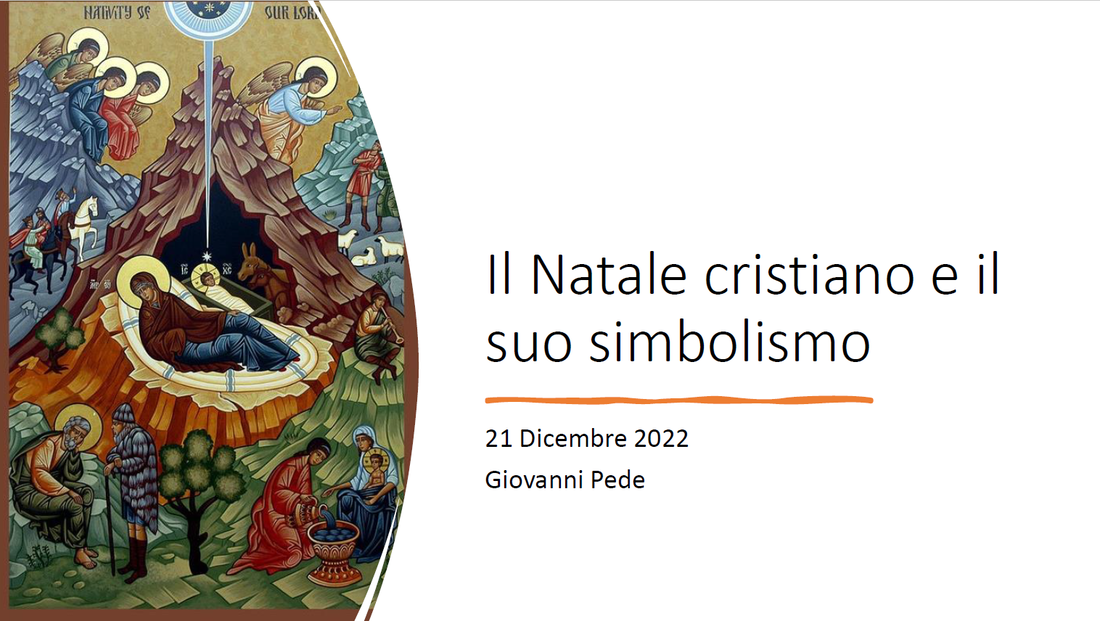
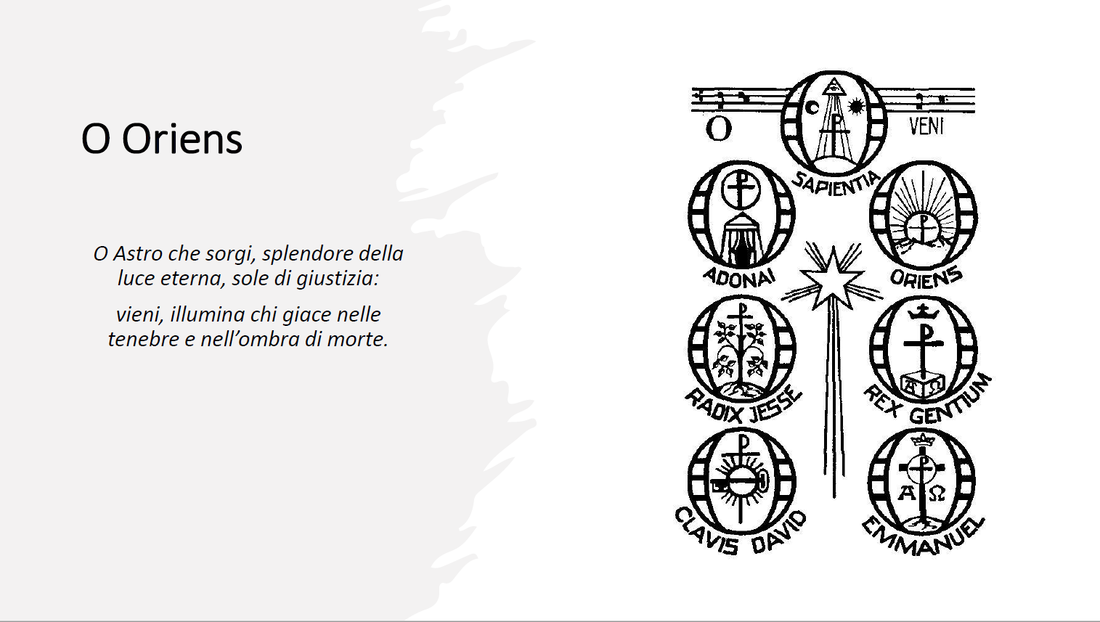
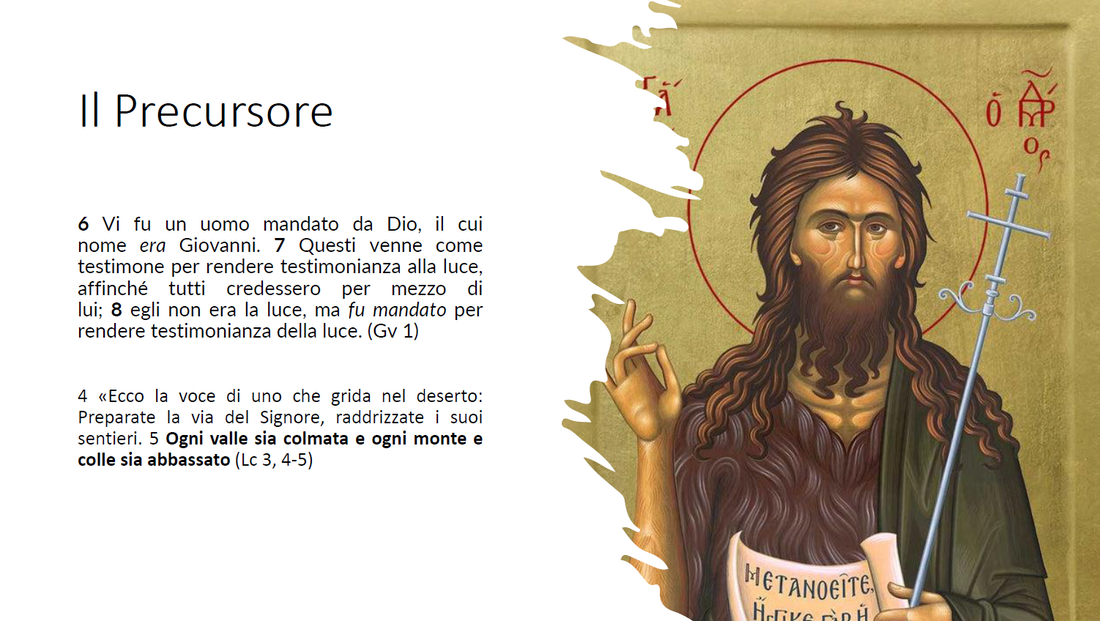
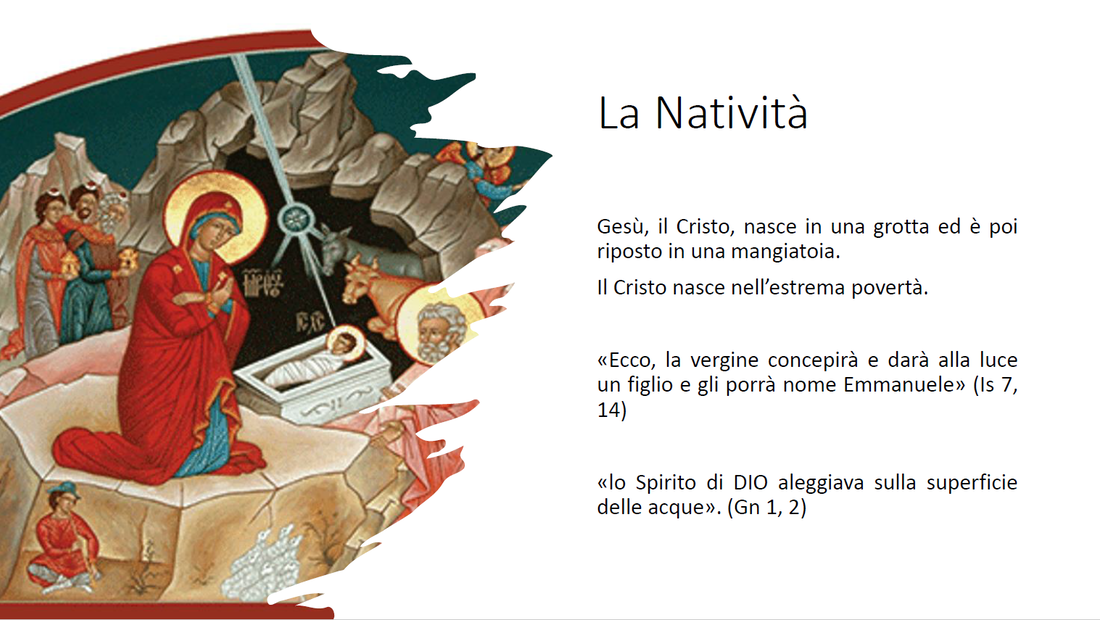
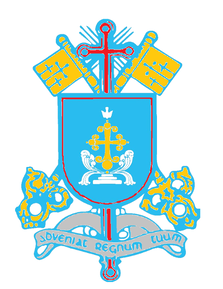
 RSS Feed
RSS Feed
